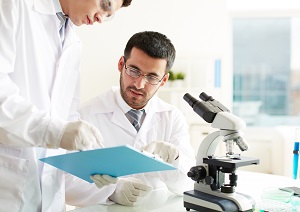Biliary atresia is a disease that affects the bile ducts, or the channels that carry bile from the liver to the intestine. It occurs already in the neonatal age and causes the reflux of bile into the liver, causing cirrhosis and yellowing of the skin. The fibrous tissue in the ducts blocks the bile flowing into the liver, further damaging the organ. The disease affects about one in 20,000 newborns, especially girls. Although the causes are genetic, it is not a hereditary disease except in very rare cases. Usually the atresia occurs between the second and sixth week of life.
The newborn has yellow skin, an enlarged liver and a swollen abdomen. The urine is dark and the stools are clear. All these symptoms are also present in other liver diseases, which makes the diagnosis more laborious. Before talking about atresia it is necessary to perform laboratory tests that exclude other pathologies. At this point ultrasounds are used to measure the size of the bile ducts. For the moment, the only treatment for biliary atresia is surgery.
The doctor creates a drainage of bile from the liver, so as to replace the blocked ducts. For this purpose we use a piece of intestine taken from the child himself. If all goes well, the jaundice disappears and the child returns to feel good at least for some time. You can follow a fairly normal diet, with due care. Unfortunately the operation is successful only in 50% of cases.
In the case of reduced bile flow, the child must reduce fat as much as possible. He must also take vitamin supplements, given that one of the tasks of bile is to absorb these substances. Even in the best cases, liver damage tends to continue its course and cause cirrhosis. At this point all that remains is liver transplantation.
Source: paginemediche.it
Add a comment





